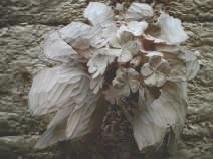

|
April 17th:- All the petals have now been carefully carved and the piece has now fully taken shape, but, there is still a great deal of work to be done. The leaves, which have provided a sturdy base for the work on the flower head, can now be better defined |
|
Creating a Carving 4 |
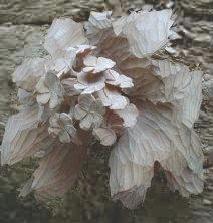
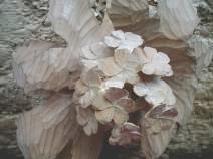
|
Firstly , there is more careful undercutting, separating the leaves yet more from each other, giving them an even greater feeling of delicacy. More shape and character is given to the leaves, the edges are cut to represent the nature of Guelder Rose leaves. |
|
April 18th:- The carving is now almost completely finished and just requires some cleaning up before being joined to the first piece. The cleaning up consists of running over areas of the carving with very sharp shallow gouges to remove a wafer thin layer of wood to give the finished piece a smooth appearance. This work is aided by limited use of very fine glass paper. |
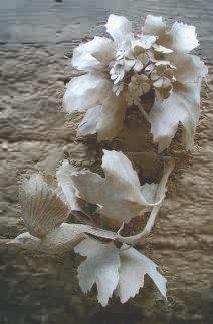
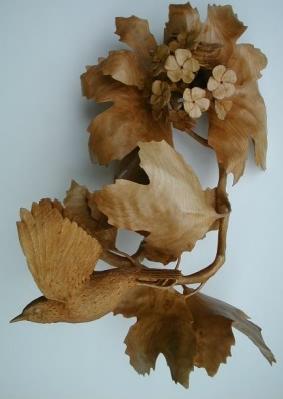
|
April 19th:- With both pieces now completed, they are ready to be joined together, achieved by pegging and gluing. The reason this carving is made from two pieces is to provide a greater depth in the finished piece. When they are joined, the half with the redstart will be stepped forward and will protrude approximately 190mm(7.5") from the wall. This extra depth makes it a very dynamic carving. The carving is then finished with one coat of oil, is allowed to dry, carefully rubbed down with a fine grade of wire wool and then given a last coat of oil. This is an extremely durable finish, that will require no maintenance, aside from dusting, for many years. |
|
Carving No. 605 "Redstart on Guelder Rose" April 2000 Wall hanging If you wish to see this carving in more detail |
|
After the final application of oil has completely dried the carving is gently buffed with a soft cloth to produce a patina that will mellow and become even more beautiful with age. |


|
|
